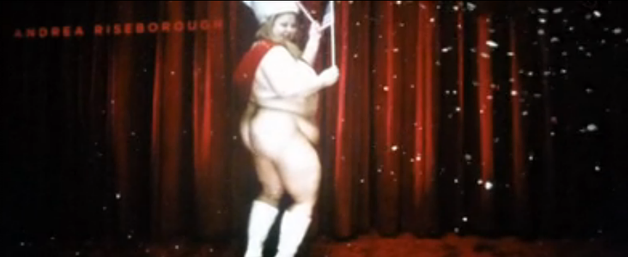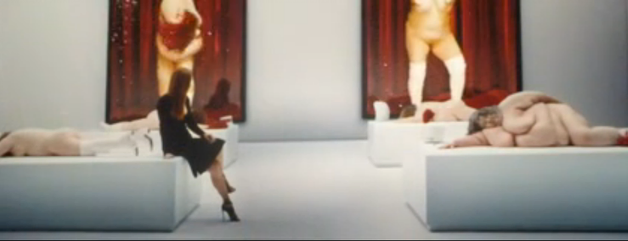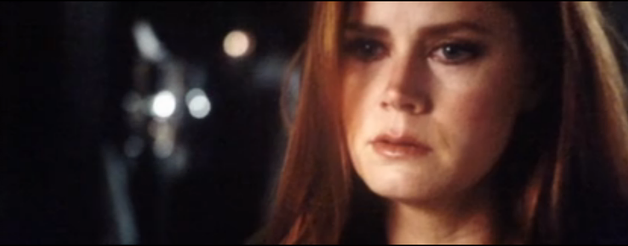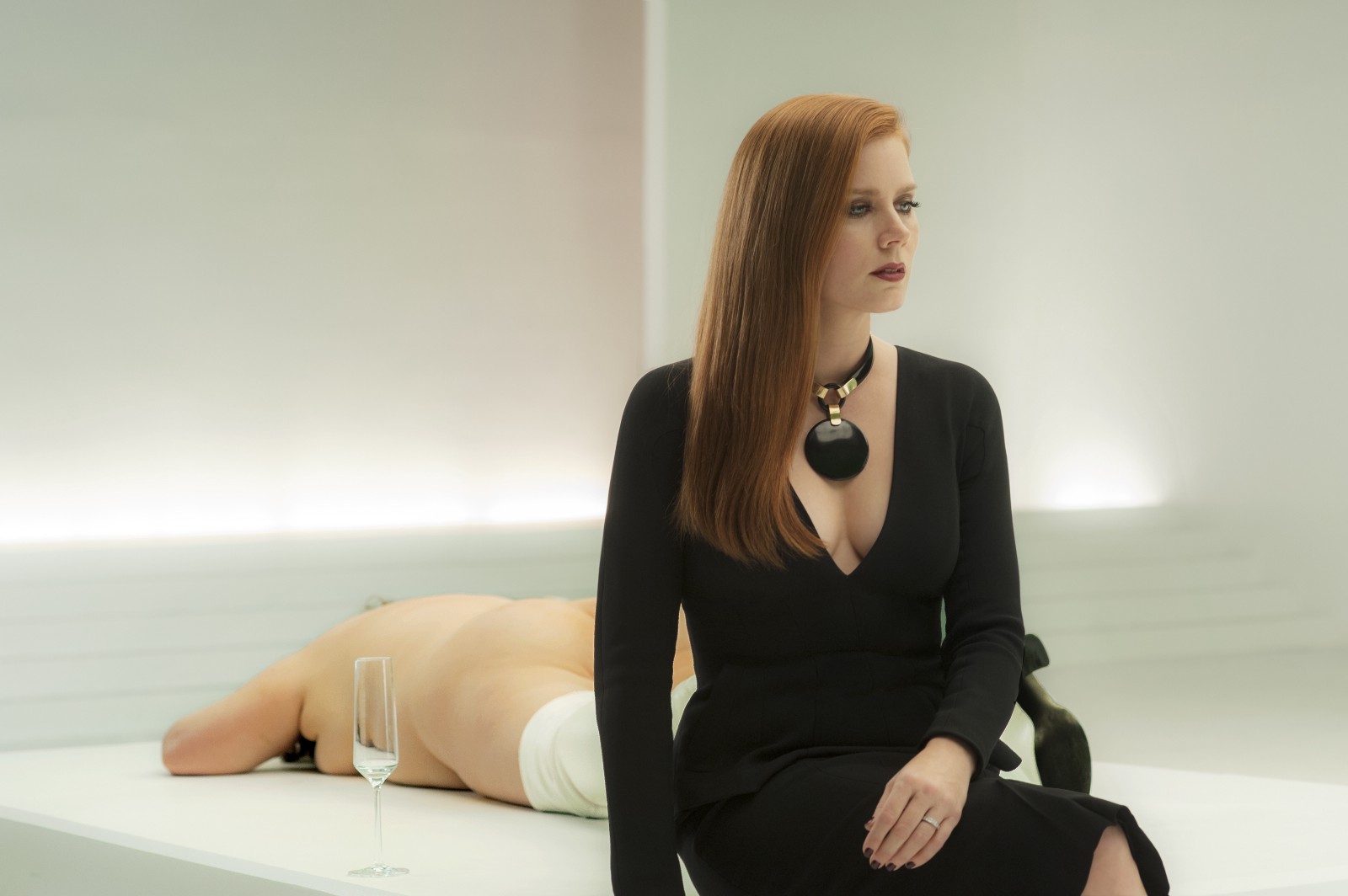The opening scene of Nocturnal Animals caught me by surprise. It’s a puzzling way to start a film because there’s no context. We don’t know anything about the world. And by the time the movie ends, this first scene is a mysterious as the final one.
What I’d like to do here is try and solve the meaning of the opening scene while also showing you the process I use when I analyze films. So this is at once a piece on Nocturnal Animals and on general active viewings techniques.
First, we identify the elements of the scene.

There are:
- Women
- Dancing
- Naked
- Overweight
- Happy
Second, we look at the symbolic meanings that are generally associated with these things.
- Life, creation, beauty, motherhood, nature, emotion, with some symbolism revolving around sexuality and sensualness
- Energy, fun, expression, emotion, health, spirit
- Vulnerability, freedom, truth, confidence, exposed.
- Unhealthy, lack of restraint, indulgence. But also: plenty, presence, warmth, comfort
- Positive, confident, cheerful, energetic, satisfied
Third, we state the situation.
Naked, overweight women happily dance.
Fourth, we ask if this is what we’d expect, yes or no, and why?
Being naked is usually either something that makes us feel either self-conscious or empowered. Here, the women are empowered. Oten that empowerment comes from the attractiveness of our bodies. Dancing naked is mostly associated with stripping, which is mostly associated with attractive bodies. So we have a dissonance, as women many would think would be uncomfortable being naked when overweight are actually proud and happy to be naked when overweight. It is not what we expect from the situation. It’s an embracing of flaws.
Fifth, we ask if there is a main character that aligns with these characteristics and their symbolic meanings.
Is one of the main characters a woman? Yes, Susan (Amy Adams).
Does she dance? No. Does she embody the characteristics of dancing? No.
Is she naked? No. Does she embody the characteristics of being naked? No.
Is she overweight? No. Does she embody the characteristics of being overweight? No.
Is she happy? No. Does she embody the characteristics of being happy? No.
Sixth, we evaluate.
If the answers were mostly “yes”, then we could conclude that this scene resonates with the character and thus connects with the character. We could then apply meaning to the scene based on the journey of the character. Because the answers were all “no”, we’d usually rule the character out as a match. But, there’s one further step.
Before ruling out, you have to check if the character is the opposite.
Does Susan embody the opposites of dancing? Yes.
Does she embody the opposites of being naked? Yes.
Does she embody the opposites of being overweight? Yes.
Does she embody the opposites of being happy? Yes.
So we do have a connection! It’s an inverse relationship. This opening scene is emblematic of what Susan is not.
Throughout the movie we see the present version of Susan as cold, confused, unhappy, drained, haunted, bad at expressing her emotions and dealing with her emotions. She feels guilty, trapped, and unsatisfied. All this, despite her being beautiful, rich, successful, and well-respected within her field.
That means that those women at the beginning are everything that Susan is not.
Is that all?
Seventh, we check for further connections.
The women end up being videos from an art exhibit. So they were part of an artistic expression.
Does art connect with Susan? Yes, she’s a gallery manager, so it’s part of her life.
Is there anyone else involved with art? Yes, Edward is a writer. He uses his novel as a vessel to explore the pain and suffering he felt after Susan cheated on him. The novel is a tale of loss and vengeance, at once brutal in its condemnation of how Edward acted, placing the blame squarely on himself, while also allowing him a method for forgiveness and ultimately moving on.
What we see is that Edward’s novel is an act of creation (connects to the concept of Woman), of personal expression (connects to the concept of dancing), detailing past flaws (connects with the idea of overweight and nakedness), in order to find catharsis and thus positivity (connects with happiness).
Eight, we re-evaluate.

We now see there’s a connection between the Women and Susan, between the Women and Art, between Art and Edward, and between Edward’s Art and the Women.
The connection between Edward’s Art and the Women are similar in that both show art as a cathartic act that renders the artist as both flawed and powerful. Art is exposure, it’s stripping down and flaunting everything about yourself rather than being self-conscious. This nakedness and passion is what creates art that mesmerizes and captivates.
The missing piece there is Susan’s relationship with art. We know she manages a gallery. But does she create art? No. Throughout the movie she says she’s not good at creating. That she’s a bad artist. That she just can’t do it. And she’s the only character in the movie who we see as miserable and defeated.
Ninth, we conclude.

Nocturnal Animals is about the relationship between people and expression. It shows us how creating art, expressing yourself through art, can empower us, as it allows us to draw strength from our biggest flaws and find catharsis and triumph from what we’re most sensitive about. It also reveals the detrimental effects of having no creative outlet, of keeping everything bottled in and bottled up. That kind of internal tension erodes the soul, slowly destroying our sense of self and self-worth.

